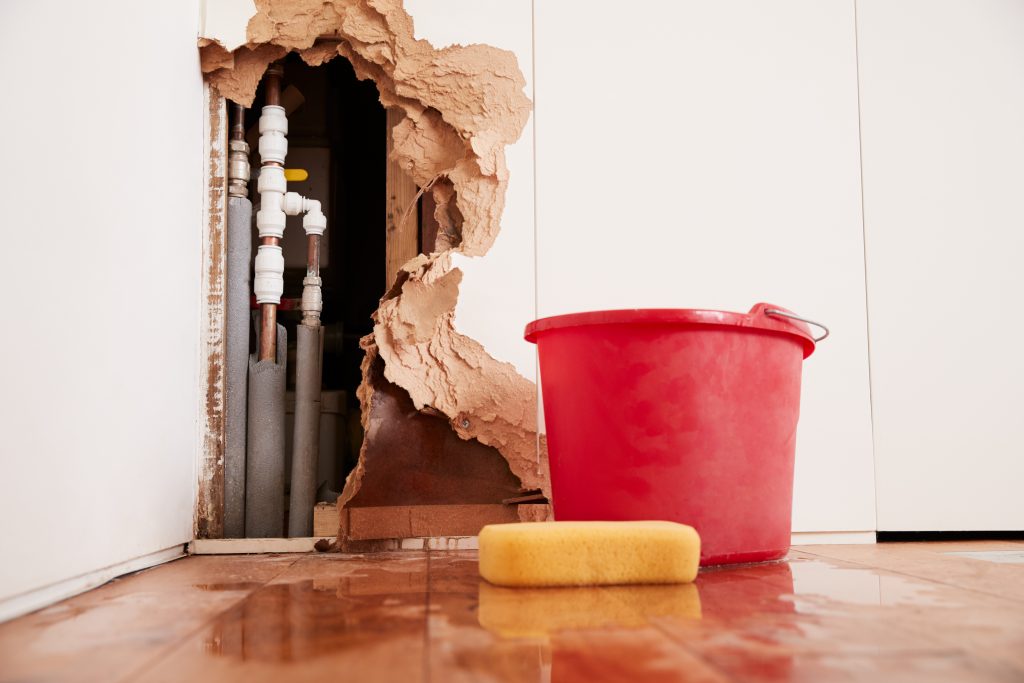6 Methods to Spot Hidden Water Line Leaks Successfully
6 Methods to Spot Hidden Water Line Leaks Successfully
Blog Article
Nearly everybody may have their own theory when it comes to Finding hidden leaks.

Early detection of leaking water lines can alleviate a possible calamity. Some little water leaks may not be visible.
1. Take A Look At the Water Meter
Every residence has a water meter. Checking it is a surefire way that helps you discover leaks. For starters, shut off all the water resources. Make certain no one will certainly purge, use the faucet, shower, run the cleaning machine or dishwashing machine. From there, most likely to the meter and watch if it will certainly change. Considering that no person is using it, there must be no motions. That suggests a fast-moving leakage if it relocates. Likewise, if you detect no changes, wait an hour or two and check back again. This indicates you may have a slow leak that could even be underground.
2. Check Water Consumption
If you spot unexpected changes, regardless of your usage being the exact same, it indicates that you have leakages in your plumbing system. An unexpected spike in your bill suggests a fast-moving leakage.
At the same time, a constant increase every month, even with the same practices, shows you have a slow-moving leakage that's additionally gradually intensifying. Call a plumber to completely check your home, especially if you really feel a warm area on your floor with piping underneath.
3. Do a Food Coloring Examination
30% comes from toilets when it comes to water intake. Examination to see if they are running properly. Drop specks of food color in the storage tank as well as wait 10 minutes. There's a leakage between the tank as well as bowl if the color somehow infiltrates your bowl throughout that time without flushing.
4. Asses Exterior Lines
Do not forget to examine your outdoor water lines also. Needs to water seep out of the connection, you have a loosened rubber gasket. One tiny leakage can squander bunches of water and surge your water costs.
5. Evaluate as well as Assess the Situation
Property owners must make it a routine to check under the sink counters and also also inside cupboards for any bad odor or mold development. These two red flags suggest a leakage so punctual focus is called for. Doing regular examinations, even bi-annually, can conserve you from a significant issue.
Check for stainings and also weakening as the majority of pipes and also devices have a life span. If you think leaking water lines in your plumbing system, do not wait for it to rise.
Early discovery of leaking water lines can alleviate a prospective disaster. Some small water leakages may not be noticeable. Checking it is a guaranteed way that assists you discover leaks. One tiny leak can squander lots of water as well as increase your water expense.
If you suspect dripping water lines in your plumbing system, do not wait for it to escalate.
WARNING SIGNS OF WATER LEAKAGE BEHIND THE WALL
PERSISTENT MUSTY ODORS
As water slowly drips from a leaky pipe inside the wall, flooring and sheetrock stay damp and develop an odor similar to wet cardboard. It generates a musty smell that can help you find hidden leaks.
MOLD IN UNUSUAL AREAS
Mold usually grows in wet areas like kitchens, baths and laundry rooms. If you spot the stuff on walls or baseboards in other rooms of the house, it’s a good indicator of undetected water leaks.
STAINS THAT GROW
When mold thrives around a leaky pipe, it sometimes takes hold on the inside surface of the affected wall. A growing stain on otherwise clean sheetrock is often your sign of a hidden plumbing problem.
PEELING OR BUBBLING WALLPAPER / PAINT
This clue is easy to miss in rooms that don’t get much use. When you see wallpaper separating along seams or paint bubbling or flaking off the wall, blame sheetrock that stays wet because of an undetected leak.
BUCKLED CEILINGS AND STAINED FLOORS
If ceilings or floors in bathrooms, kitchens or laundry areas develop structural problems, don’t rule out constant damp inside the walls. Wet sheetrock can affect adjacent framing, flooring and ceilings.
https://www.servicemasterbyzaba.com/blog/how-to-detect-water-leakage-in-walls/

I recently found that write up on Detecting hidden plumbing leaks while browsing the web. I beg you take the time to share this blog post if you enjoyed it. We appreciate reading our article about Hacks to detect leaks.
Overflow? We're here! Report this page